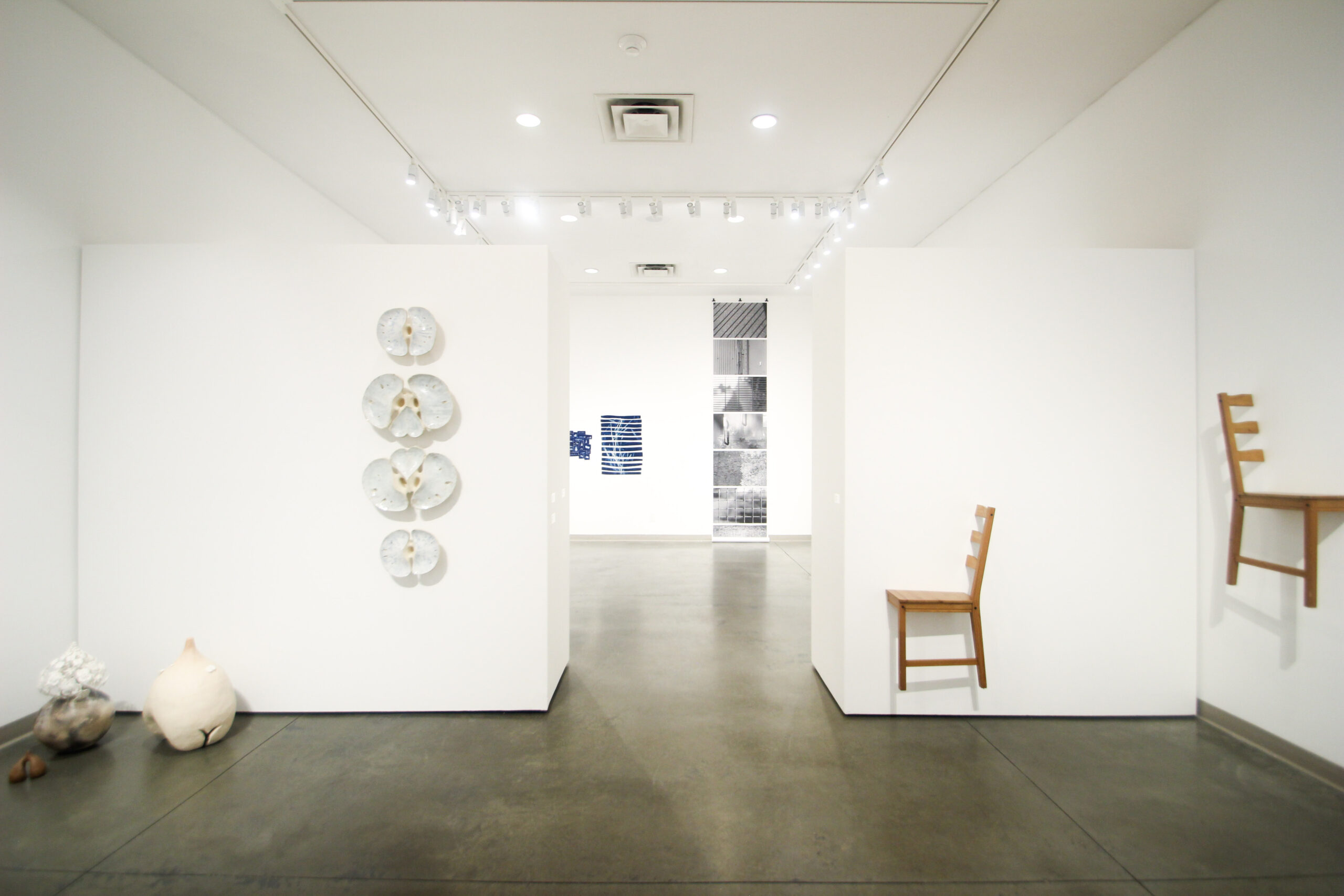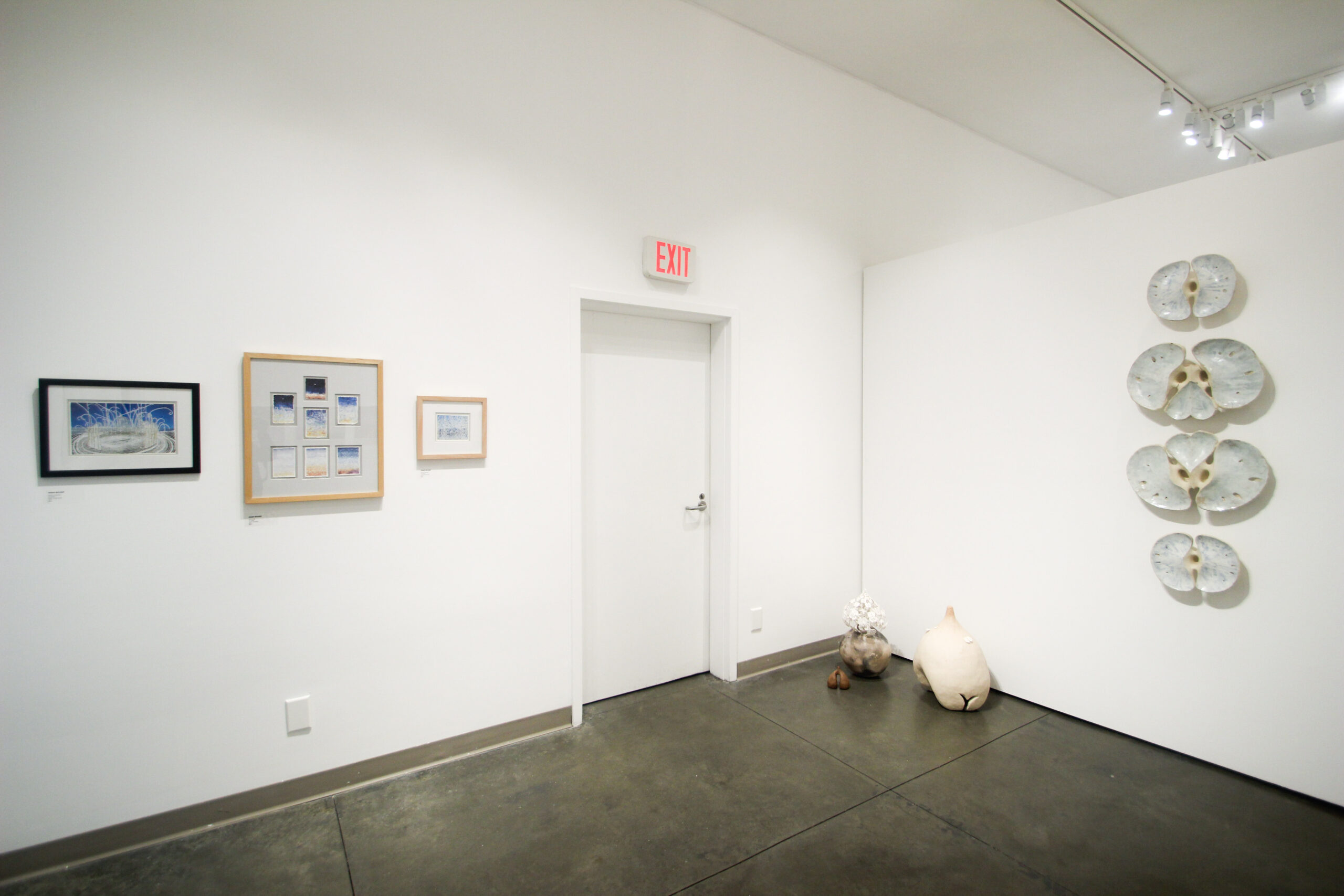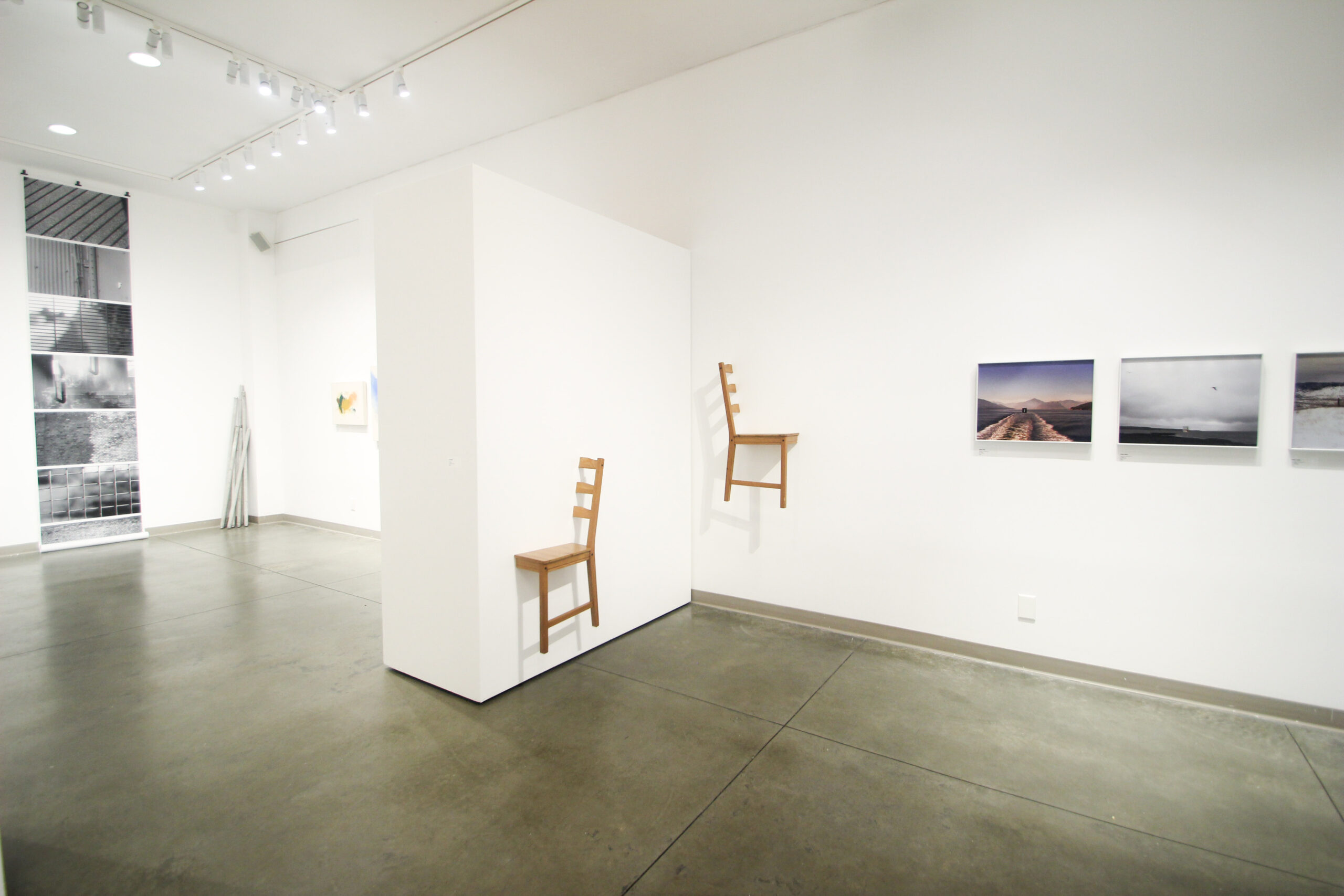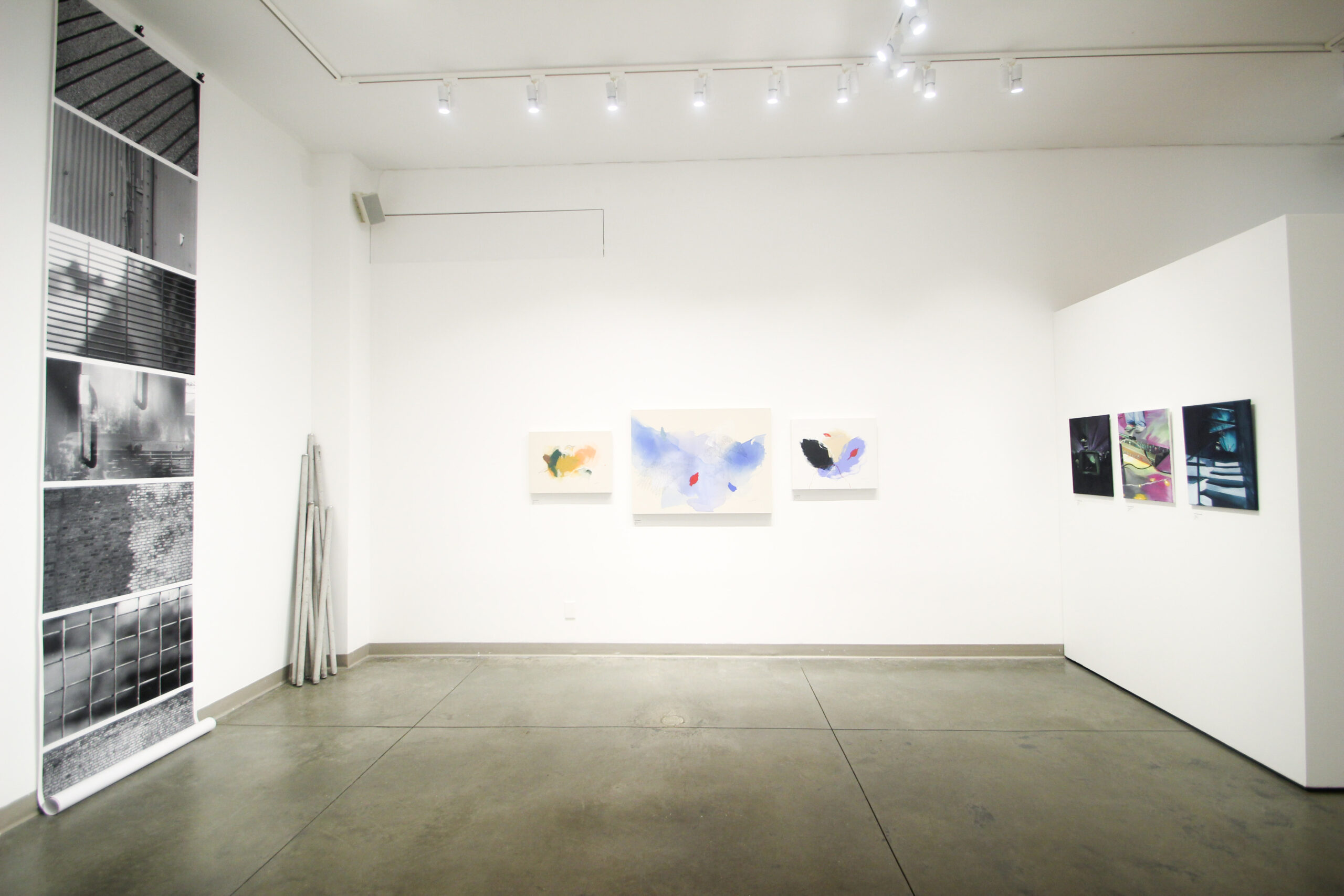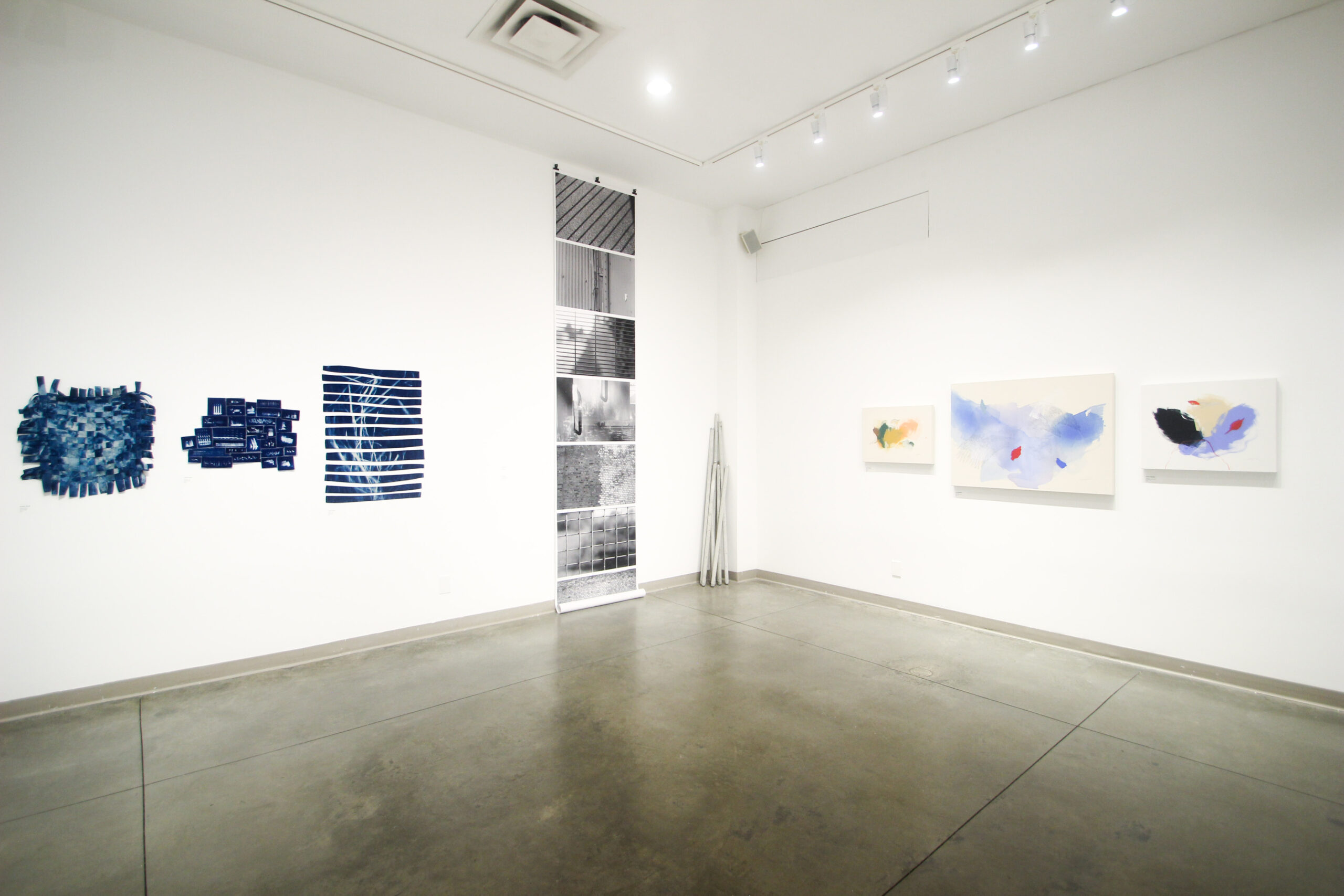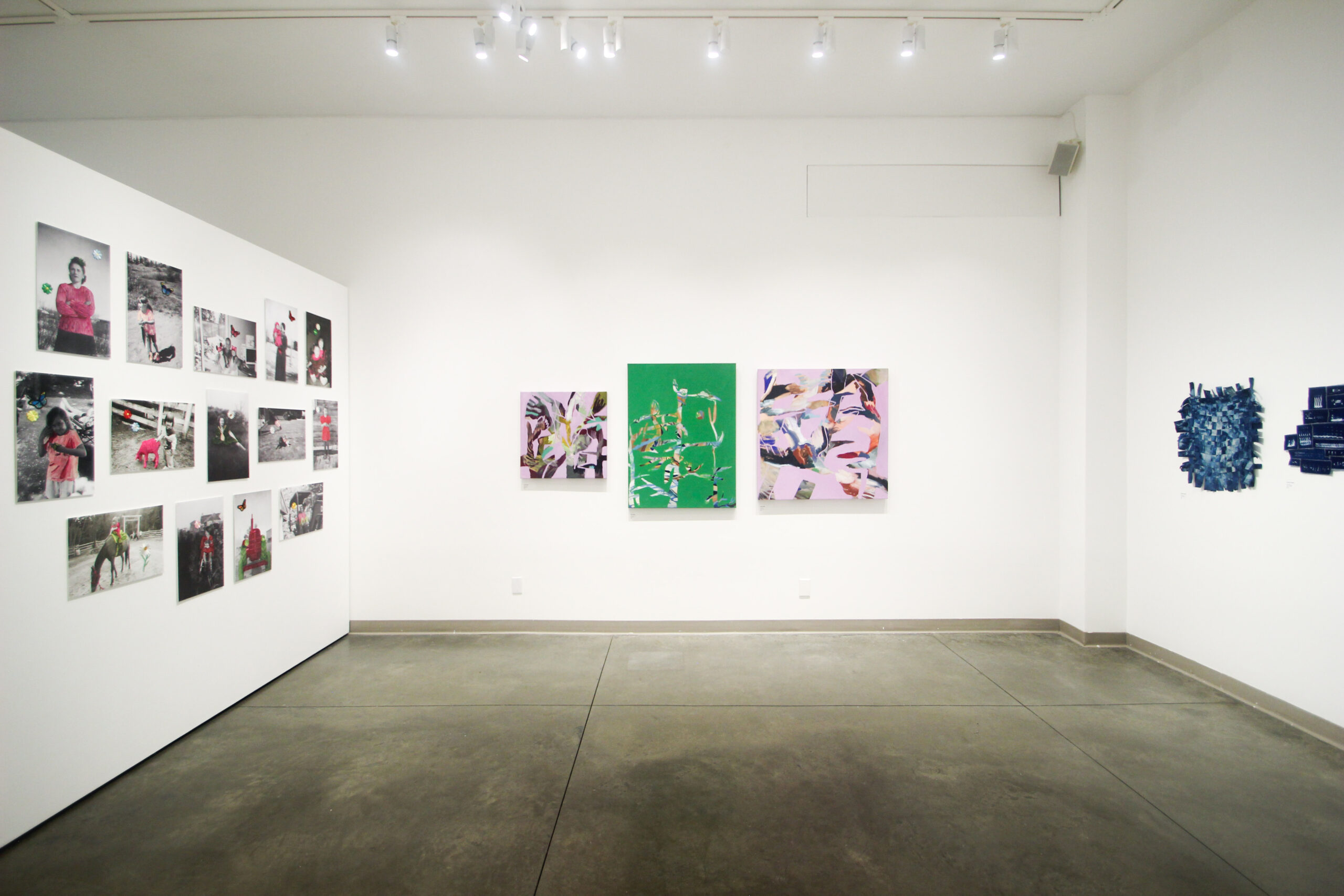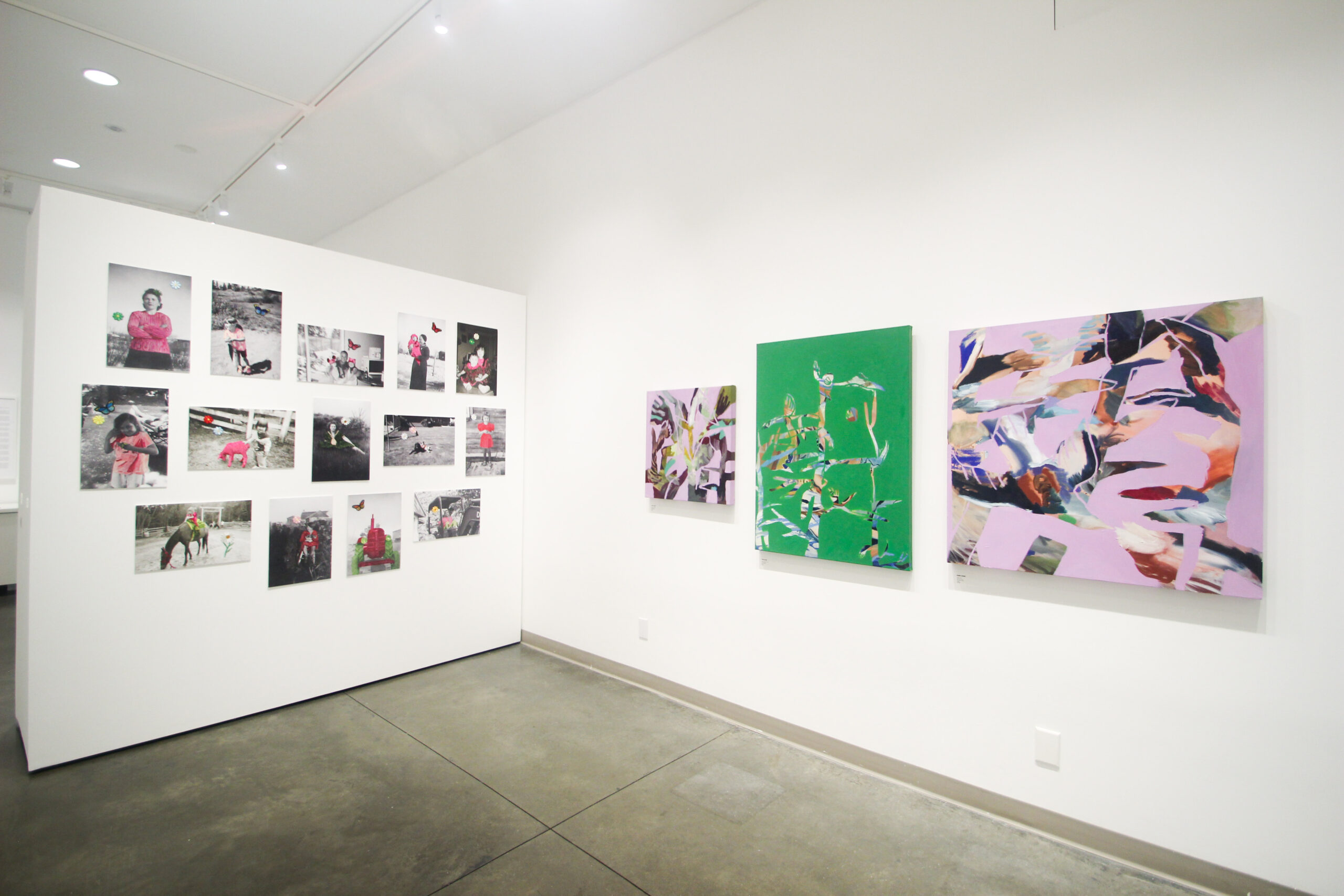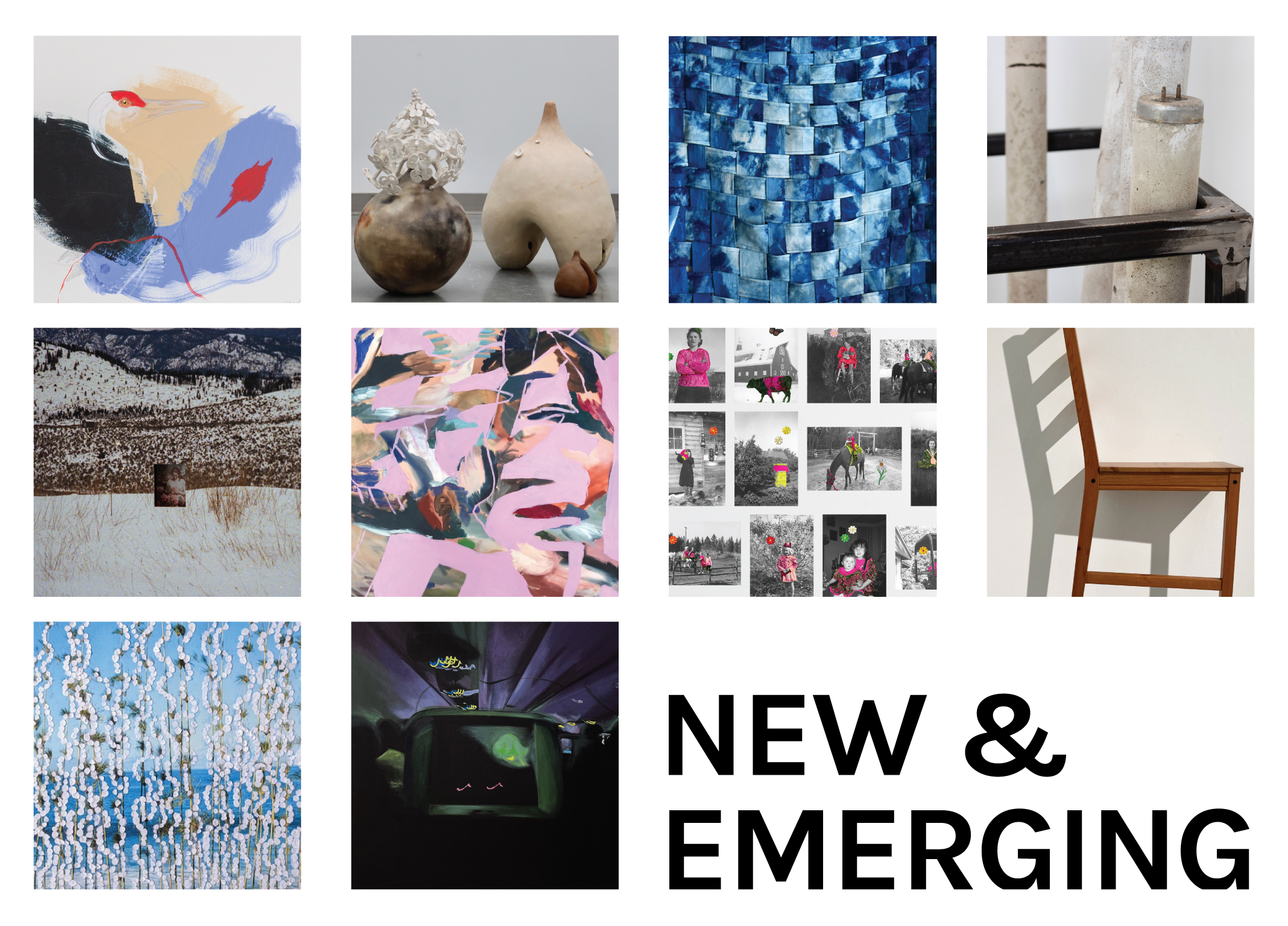New & Emerging
May 21 – June 22, 2024
This fresh and eclectic show presents work by each of the ten exhibiting artists in a range of media including painting, ceramics, paper works, mixed media installation, photography, and textile.
Artists: Krystal Charlston, Claire Crawford, Maya Florey, Rachel Foster, Paniz Mani, Pip Mamo, Chantal New, Paige Quinn, Susan Wolpert, and Ketty Haolin Zhang
Exhibition Reception: Sunday, May 26, 2024 from 2 – 4 p.m.
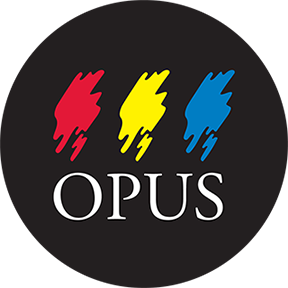
Special thanks to Opus Art Supplies North Vancouver for their support of this exhibition.
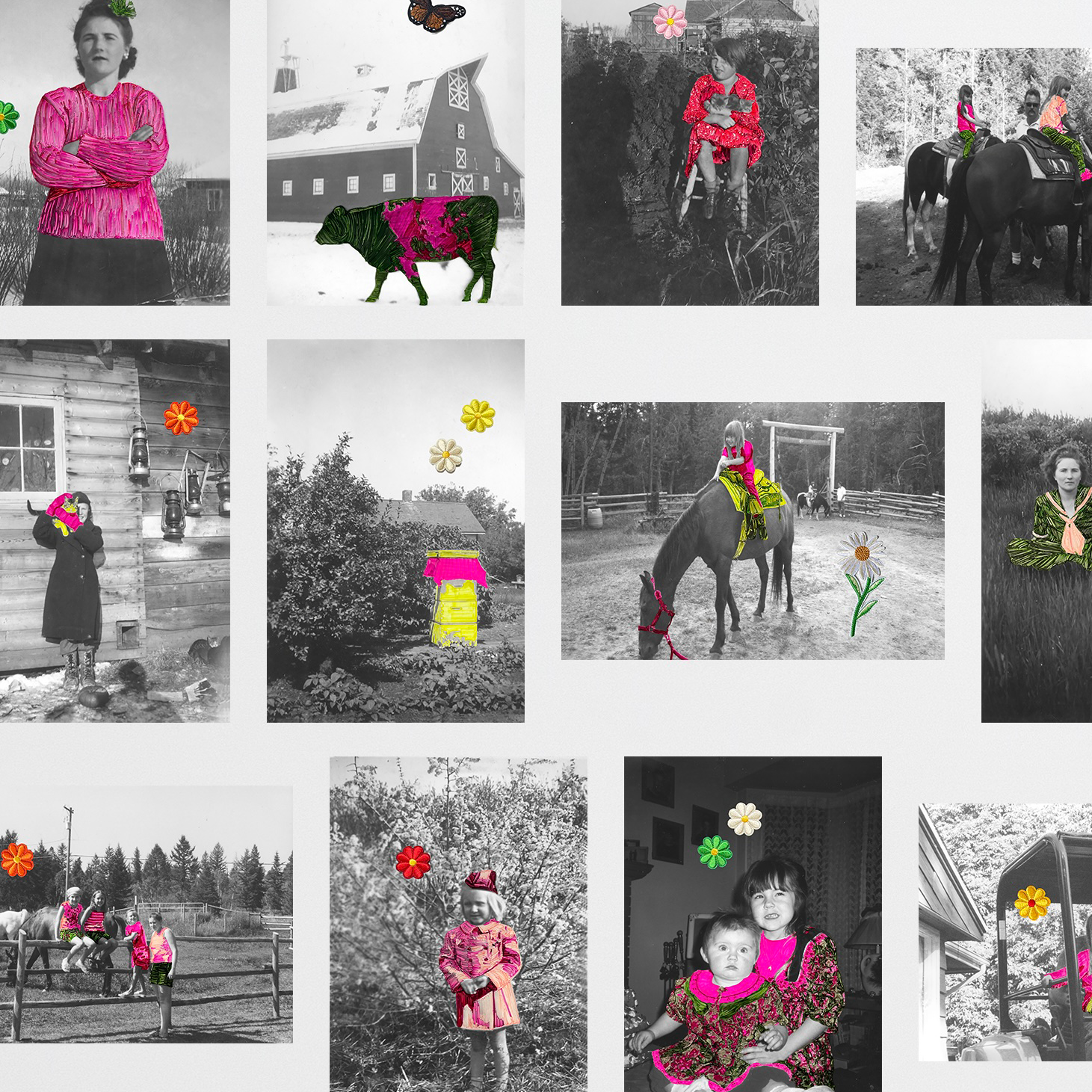
Langley-based mixed media artist Krystal Charlston is dedicated to challenging traditional gender norms and exploring her identity through her art. Drawing on her rural upbringing, Charlston’s sculptures and installations offer a unique perspective on her personal journey from childhood to the present, utilizing a range of styles and techniques. Her distinctive and hyper-feminine style aims to redefine perceptions of femininity and masculinity in today’s society. Her art invites viewers to question assumptions and embrace their true identities, fostering a space for growth and self-discovery.
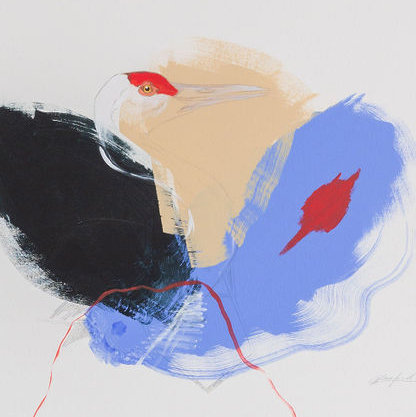
Employing surrealistic depictions of flora and fauna, while being situated in an abstract framework, artist and graphic designer Claire Crawford is intrigued by the dichotomies inherent in the interplay between nature and culture. In her most recent series, Liminal, her work reveals a greater degree of personal expression, shifting away from the illustrative while exploring the act of painting, allowing her physicality to merge with the artwork to create a liminal moment. By distorting landscapes and capturing the moment of fleeting presence, these pieces invite contemplation of the ephemeral balance between existence and disappearance.
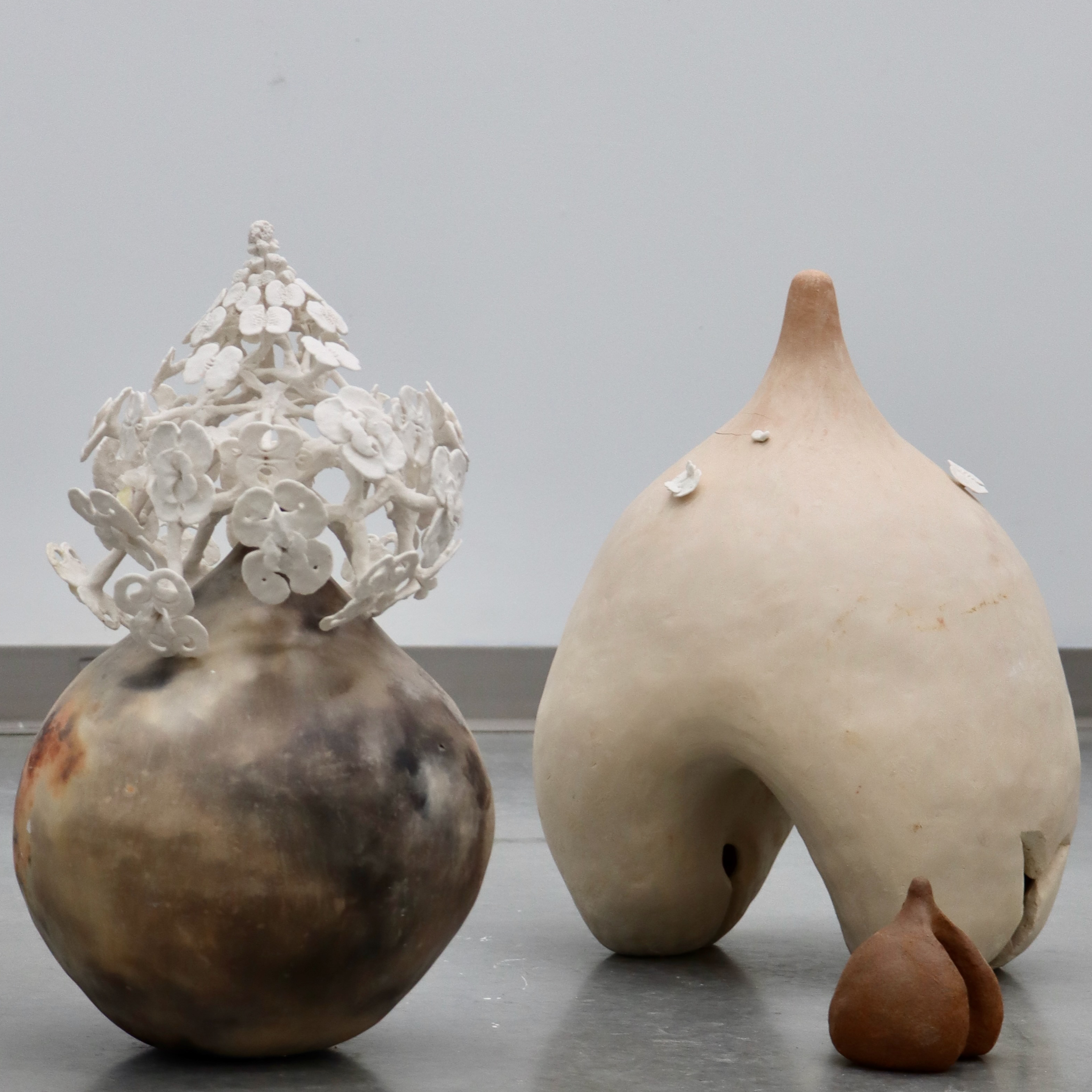
In their series playing god to the lawn multi-disciplinary artist Maya Florey was inspired by the conversation between the inside and outside of the ceramic vessel form. Working in a non-linear way that mimics the shape of mycelium, this series embodies an interconnectedness that celebrates fluidity, rejecting calcified binaries, and appearing in ways that are not quite familiar. Florey’s practice revolves around the metaphysics of ecosystem, and the visual languages spoken among plants, animals, rocks and fungi.
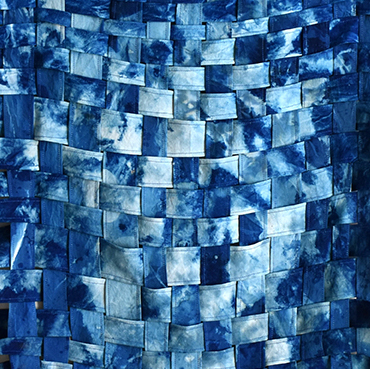
In these selected works, North Yorkshire-born Vancouver-based artist Rachel Foster represents her ongoing exploration in response to the decline in wildlife populations worldwide—a trend propelled by human activities such as habitat fragmentation, agriculture, and resource extraction. By using biological elements like sonograms, textiles, and plants, she aims to construct an immersive ecological narrative to bring attention to human-caused species decline.
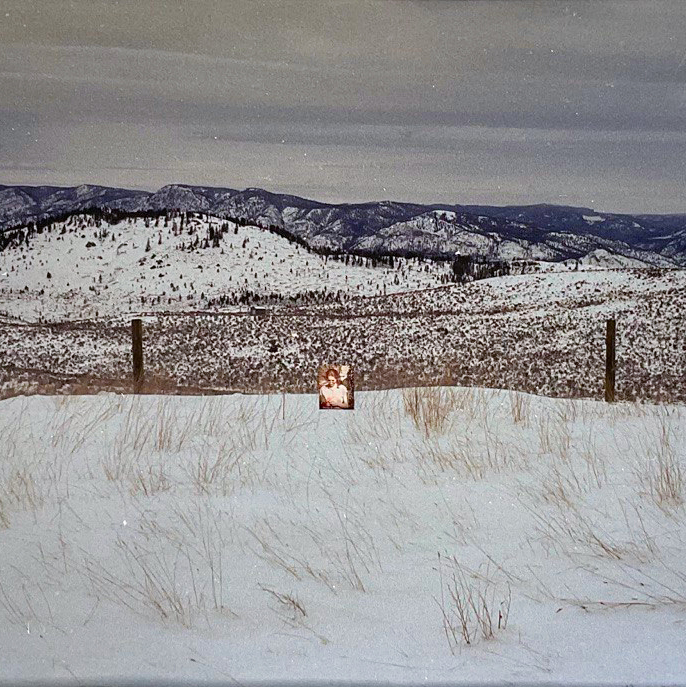
In her photographic series The Longing for Nostalgia Iranian artist Paniz Mani investigates the profound trauma of immigration and exile. With this body of work she seeks to reconcile with her past, exploring the layers of nostalgia, loss, and cultural disconnection she has from Iran. Personal archival images from her past life in Iran are layered onto subdued contemporary landscapes captured in Canada. By utilizing old photographs from her archive as tangible objects, they become a kind of surrogate homeland for Mani, a way to hold onto a piece of the past.
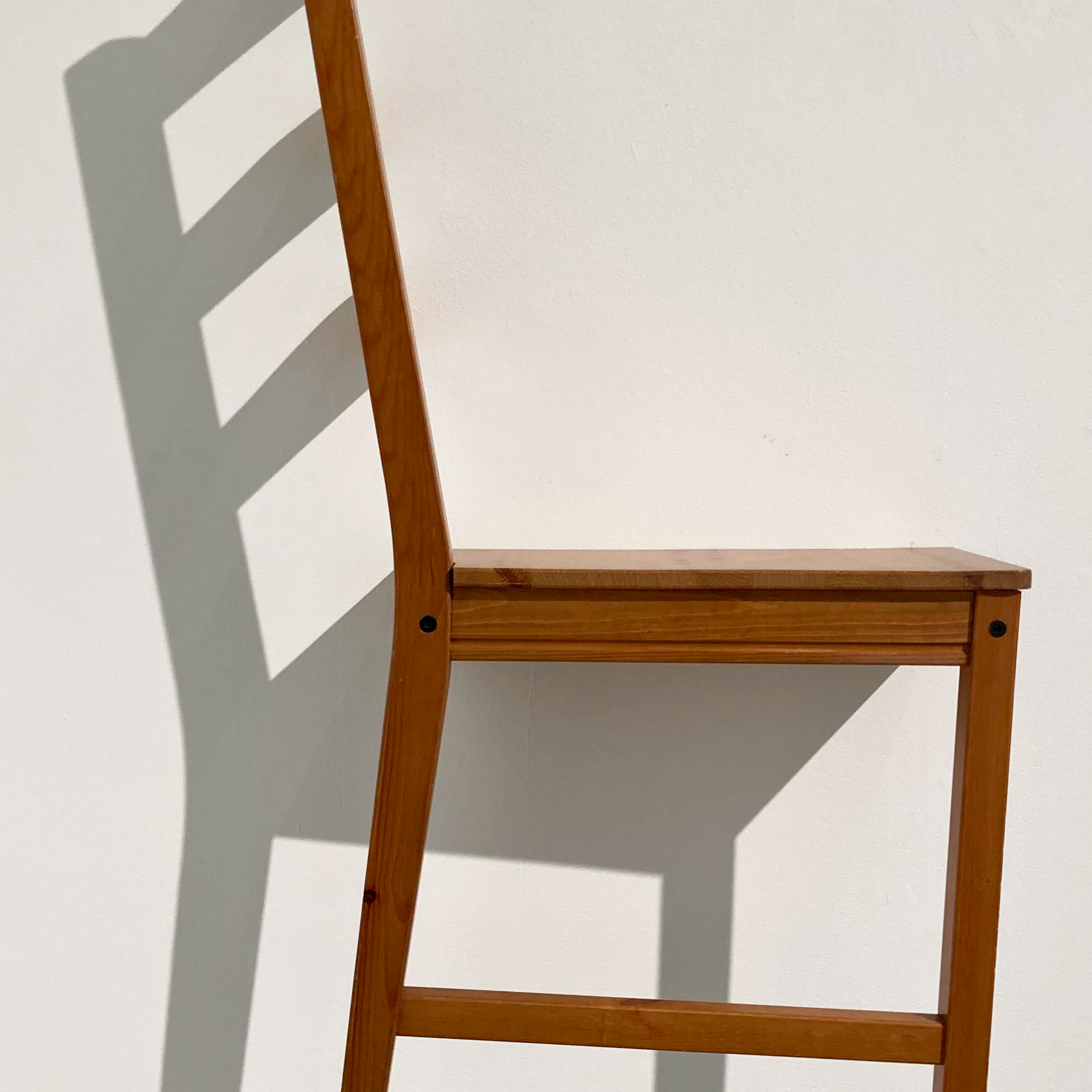
Pip Mamo
Pip Mamo is a Vancouver-based sculptor and installation artist working with textiles and found objects. Their work is interested in how homes and household objects contain memories, and the histories of the intimate spaces we reside in. In Through, they explore the chair’s relationship to space, challenging our perception of reality and the way we expect to encounter objects. Through presents the chair as being trapped between spaces, the ghostly remnants of its other half expressed through its shadow.
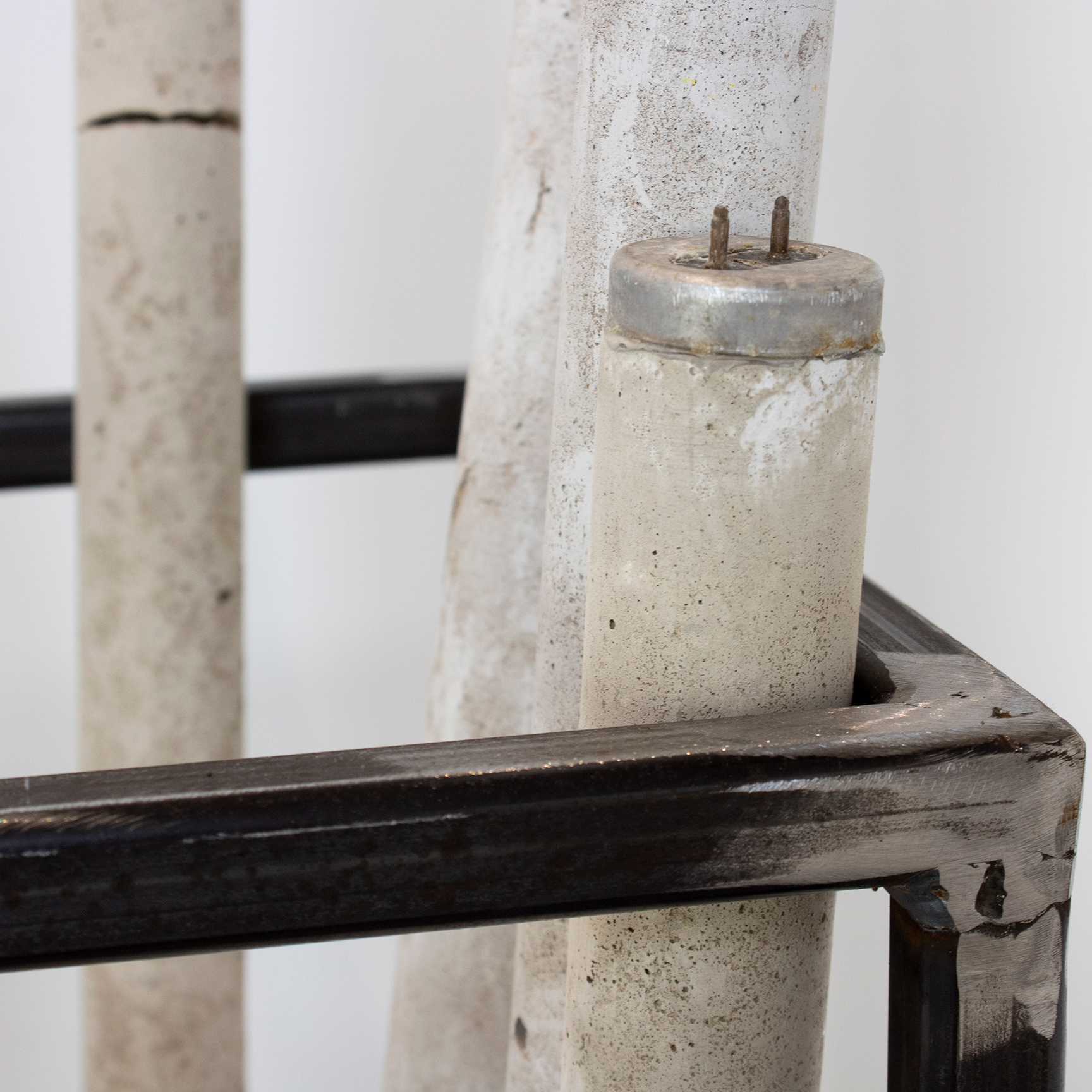
Chantal New
Multidisciplinary artist Chantal New is motivated by the intersections of art and social justice. These pieces, minimal yet emotionally charged, have been inspired by her ongoing research into the physical and social architecture of institutions, looking to uncover the violence we encounter in everyday systems. Functioning as singular components of a larger whole, photographic images and re-contextualized objects are combined to produce a reservoir of possible meanings and discursive experiences. Through strategies of fragmenting and combining, cropping and concealing, she investigates both the visible and invisible barriers that pervade society.
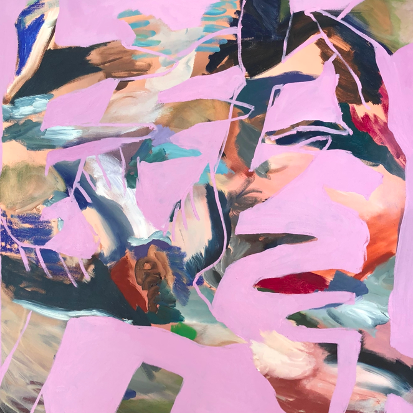
Paige Quinn
In this body of work, artist Paige Quinn creates abstracted oil paintings exploring ideas of ecological spirituality, femininity, connection, and grief. Her paintings express personal thoughts and experiences about the natural world as well as research into ecological spirituality. She looks to depict the Canadian landscape as remembered through personal experience and relationship to the land, instead of being perceived as a chronology of conquest. By anthropomorphizing elements of nature in her lush paintings, she aims to highlight these relationships and question our role within them.
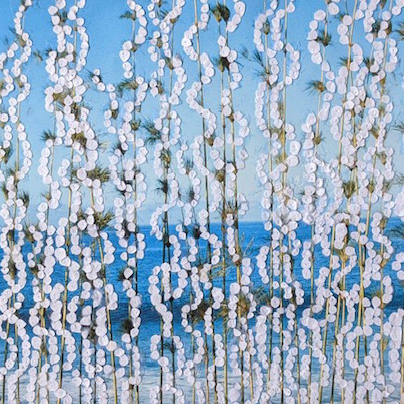
For artist Susan Wolpert, creating paper cuts has been a manageable way for her to express herself visually. Using readymade-coloured papers, as well as photocopies of photographs she has taken, Wolpert’s paper cuts convey an essence of the experience she feels while in a particular landscape. Her recent work has been more inclined to reflect aspects of theoretical physics, a subject in which she is interested. These ideas allow for the exploration of the fundamental nature of existence through her imagination, as it plays into her artistic practice.
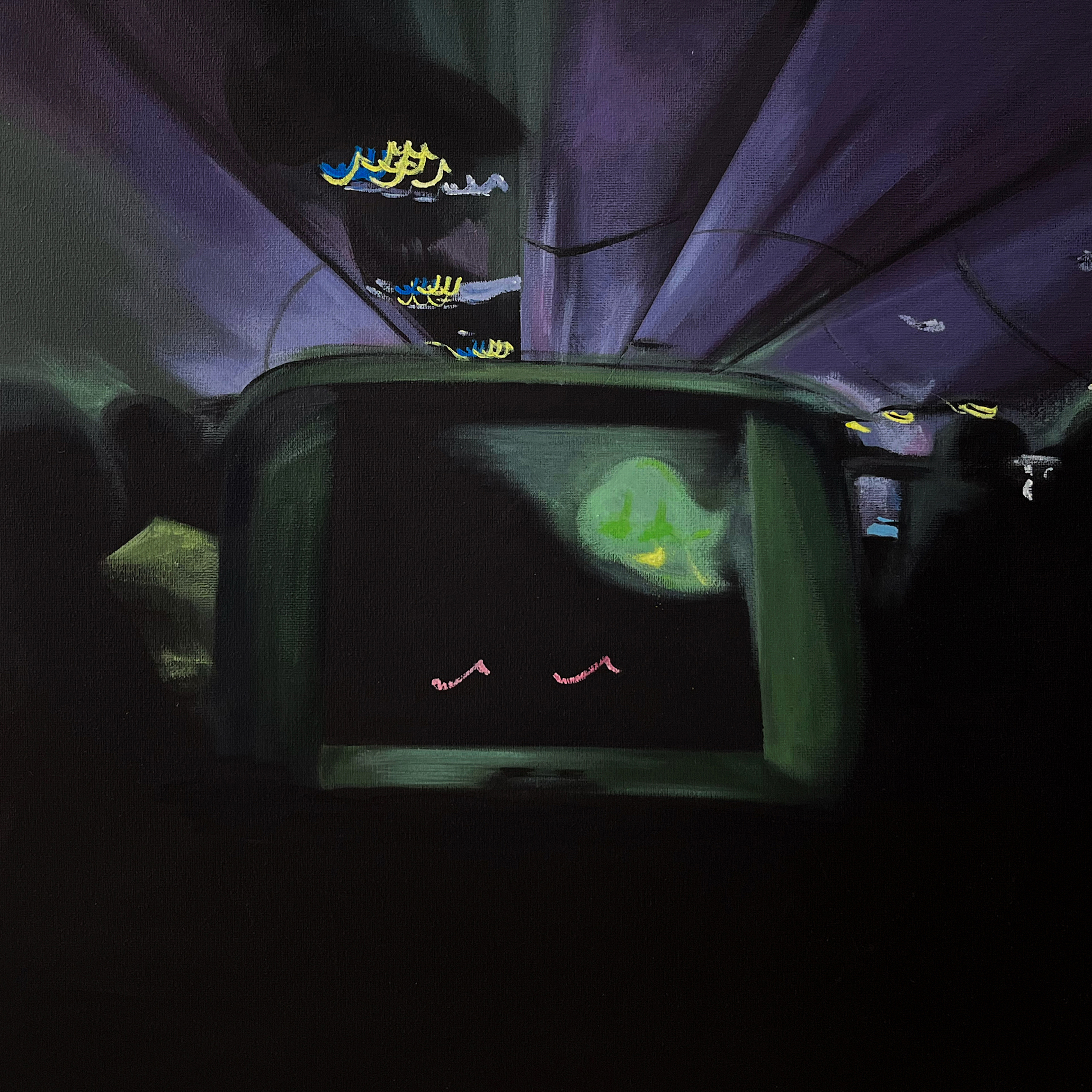
Ketty Haolin Zhang
In this series, artist Ketty Haolin Zhang is interested in creating images that embody both closeness and distance, recognizing the disorientation of living in a state of constant uprooting and finding comfort in the unplaceable. Depicting night-time scenes of public and private spaces in Vancouver and beyond, these paintings employ a saturated palette and heavy contrast to express contradictory feelings of welcome and alienation, reflecting on Zhang’s own diasporic experience of wanting to belong to a specific place or group while resisting assimilatory patterns. Zhang explains, “just as leaving is often a privilege compared to those left behind, non-belonging becomes a conscious choice that acknowledges the fluidity of one’s relationship with the world”.

